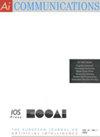Reinforcement learning vs. rule-based adaptive traffic signal control: A Fourier basis linear function approximation for traffic signal control
IF 1
4区 计算机科学
Q4 COMPUTER SCIENCE, ARTIFICIAL INTELLIGENCE
引用次数: 3
Abstract
Reinforcement learning is an efficient, widely used machine learning technique that performs well when the state and action spaces have a reasonable size. This is rarely the case regarding control-related problems, as for instance controlling traffic signals. Here, the state space can be very large. In order to deal with the curse of dimensionality, a rough discretization of such space can be employed. However, this is effective just up to a certain point. A way to mitigate this is to use techniques that generalize the state space such as function approximation. In this paper, a linear function approximation is used. Specifically, SARSA ( λ ) with Fourier basis features is implemented to control traffic signals in the agent-based transport simulation MATSim. The results are compared not only to trivial controllers such as fixed-time, but also to state-of-the-art rule-based adaptive methods. It is concluded that SARSA ( λ ) with Fourier basis features is able to outperform such methods, especially in scenarios with varying traffic demands or unexpected events.强化学习与基于规则的自适应交通信号控制:交通信号控制的傅里叶基线性函数逼近
强化学习是一种高效的、广泛使用的机器学习技术,当状态和动作空间具有合理的大小时,它表现良好。这在控制相关的问题上很少出现,比如控制交通信号。在这里,状态空间可能非常大。为了处理维数问题,可以对该空间进行粗离散化。然而,这在一定程度上是有效的。缓解这种情况的一种方法是使用一般化状态空间的技术,例如函数近似。本文采用线性函数近似。具体来说,在基于agent的交通仿真MATSim中,实现了具有傅里叶基特征的SARSA (λ)来控制交通信号。结果不仅与固定时间控制器进行了比较,而且与最先进的基于规则的自适应方法进行了比较。结论是,具有傅里叶基特征的SARSA (λ)能够优于这些方法,特别是在具有变化的交通需求或意外事件的场景中。
本文章由计算机程序翻译,如有差异,请以英文原文为准。
求助全文
约1分钟内获得全文
求助全文
来源期刊

AI Communications
工程技术-计算机:人工智能
CiteScore
2.30
自引率
12.50%
发文量
34
审稿时长
4.5 months
期刊介绍:
AI Communications is a journal on artificial intelligence (AI) which has a close relationship to EurAI (European Association for Artificial Intelligence, formerly ECCAI). It covers the whole AI community: Scientific institutions as well as commercial and industrial companies.
AI Communications aims to enhance contacts and information exchange between AI researchers and developers, and to provide supranational information to those concerned with AI and advanced information processing. AI Communications publishes refereed articles concerning scientific and technical AI procedures, provided they are of sufficient interest to a large readership of both scientific and practical background. In addition it contains high-level background material, both at the technical level as well as the level of opinions, policies and news.
 求助内容:
求助内容: 应助结果提醒方式:
应助结果提醒方式:


